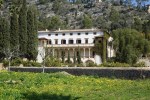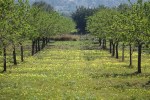Continuing the week’s celebrations of reaching 1000 posts on The Daily Norm, I wanted to revisit the post which, statistically, was the most popular of my original posts. When I say “original”, I am referring to posts containing my own photography – for the posts when I reviewed art exhibitions scored the most visits of them all. But with over 20,000 visits, this post, which originally went out on 5 July 2012, is my post popular ever collection of photos. And happily, some 6 years on, we are still very much enjoying this little corner of urban garden paradise…
First posted 5 July 2012: My Urban Balcony Garden
When you live in a city, like I do, here in the big smoke of London, every inch of greenery becomes important. When I travelled down to Glyndebourne the other day, surrounded by all of those lush green hills, and the conspicuous silence interrupted only by the occasional sheep cry, it made me realise just how lucky rural dwellers are to be surrounded by that constant beauty and tranquility. Yet it is only human nature not to appreciate what we have when we’ve got it. For all I know, the residents of those sussex country manners probably envy we Londoners who have the whole cultural world right on our doorstep.
I do like to count my blessings however, and I actually think writing a blog, which encourages one to reflect more on one’s life, making the most of occasions, events and opportunities for the sake of sharing and recollecting interesting and unique snapshots of life, makes us bloggers appreciate life with a renewed vitality and a very sharp focus. And one thing that I have always appreciated, albeit perhaps more so as my time living in London grows longer and my hours of work increase, is the green space around me.





I may only have a balcony to exhaust my green fingers, but that balcony, which runs along the front of my entire flat, is my pride and joy. There is much to be said for the urban balcony. Not only does it help to make urban life more bearable, more colourful, and more sensorily enriched, but also helps to give nature a bit of a kickstart – there have, for example, been reports of huge rises in the numbers of urban dwellers keeping beehives, so many in fact that there are now a surplus of bees for the numbers of suitably pollinating flowers available across the city. I don’t have bees, but what I have created on my balcony is my own piece of tropical paradise. I’ve surrounded my small table and chairs and my all important sun lounger with my own little slice of Spain. There I have a large brugmansia (whose flowers are spectacular bell-shaped blooms which smell glorious at night – they’re not out yet but rest assured, I will share on The Daily Norm once they are), a passion flower, an olive tree, grasses and plenty of geraniums. I’ve also encouraged honeysuckle to grow up the wall, and this year, for the first time, introduced some strawberries into the mix.
Because my urban balcony garden is a natural extension of my lounge which has a very contemporary red, black and white colour scheme, I have attempted to continue that out onto the balcony, with modern galvanised steel planters, and plenty of vivid red geraniums, which mark a wonderful contrast against the building’s crisp white washed walls and the black and grey grasses I have planted intermittently amidst blood-red cala lillies and those red-burst strawberries.





Whether you’re a city-dweller or otherwise, I strongly recommend you import some plants into your life – even if it’s only a window box hanging out of the window. The introduction of plants always creates a new geometric mix into any design scheme, bringing curves and floral bursts into often boring square buildings, which are enhanced further as day turns into night, and interesting plant-shaped shadows dance across the surfaces of your home. Whats more, as a plant grows and changes with the seasons, your home too will adapt to the altering cycle of the year, and as the plants rise and fall, you will find a great sense of achievement in tracking their story and progress in your home (just remember to water them, occasionally!)
© Nicholas de Lacy-Brown and The Daily Norm, 2001-2018. Unauthorized use and/or duplication of the material, whether written work, photography or artwork, included within The Daily Norm without express and written permission from The Daily Norm’s author and/or owner is strictly prohibited.






















































































































































































































































































































































